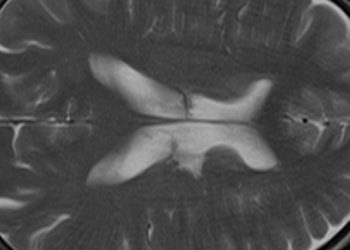Unexplained syncope and orthostatic hypotension linked to increased risk of subsequent fractures.
1. In a large cohort of patients hospitalized due to unexplained syncope and orthostatic hypotension, there was an increased risk of subsequent fractures in the future.
Evidence Rating Level: 2 (Good)
Study Rundown: The overlap between syncope, orthostatic hypotension, and falls is being increasingly studied in research. Falls, especially in the elderly, are a significant cause of morbidity and mortality. Specifically, falls can result in fractures, such as hip fractures, which are a leading healthcare concern in many countries. Previous research suggests that unexplained falls may mask a diagnosis of syncope, however, this is hard to evaluate as patients often do not recall the circumstances surrounding their fall. Therefore, this prospective cohort study aimed to evaluate the relationship of hospital admissions due to unexplained syncope and orthostatic hypotension with subsequent fractures.
This study made use of data collected through the Malmö Diet and Cancer (MDC) study which included a large Swedish middle-aged population. The discharge diagnosis listed on the patient’s file was used to identify unexplained syncope, orthostatic hypotension, and fracture. The study included 30,399 participants, of which 8,201 had incident fractures and 22,198 did not. Additionally, in total, 493 and 406 patients were hospitalised due to unexplained syncope and orthostatic hypotension, respectively. The primary outcome assessed was incident fractures occurring after hospital admissions for unexplained syncope or orthostatic hypotension compared with the individuals without such a history. It was found that the risk of incident fractures following hospitalisations due to unexplained syncope and orthostatic hypotension was increased by 20% and 42%, respectively. In addition to the primary outcome, the study evaluated baseline characteristics of individuals with incident fractures and those without incident fractures. It was found that other risk factors related to incident fractures are increasing age, female sex, increasing body mass index, current smoking, prevalent fractures and family history of fractures. Overall, the study concluded that previous hospitalization due to unexplained syncope or orthostatic hypotension are risk factors similar to the above which have already been established in literature.
This is one of the first studies examining the relationship between hospitalization due to unexplained syncope and orthostatic hypotension, and incident fractures. Therefore, it helps answer an important question about a potential risk factor for falls and fractures. Another strength is the large cohort of 30,000 patients included in this study, which helps improve the internal external validity. Another strength of this study was that it took into consideration other established risk factors as confounding factors when analyzing their primary outcome. Specifically, when analyzing the data, it included a basic and a multivariable Cox regression between risk factors and incident fractures. The basic model was adjusted for age and sex while the multivariable model was adjusted for age, sex, body mass index, current smoking, prevalent fractures and family history of fracture. A major limitation of this study is that it failed to include relevant co-morbidities that have a large prevalence in the older adult population, such as osteoporosis and dementia. In addition, it did not gather information about the number of falls experienced by participants, but rather concluded that incident fractures were sequalae of the falls. Overall, this study does shed light onto potentially important risk factors for fractures, especially in the elderly population. However, additional studies with improved methodology are needed to further support their conclusions. Specifically, future studies should focus on establishing the relationship between unexplained syncope/orthostatic hypotension and fractures sustained due to falls.
Click to read the study in BMC Medicine
Relevant Reading: The prevalence of unexplained falls and syncope in older adults presenting to an Irish urban emergency department
In-Depth [ prospective cohort]: 30,399 participants were included in this study (mean age, 57.5 ± 7.6; female, 60.2%). From these individuals, 493 (1.6%) and 406 (1.3%) were hospitalized due to unexplained syncope and orthostatic hypotension, respectively. The basic model showed an increased risk of incident fracture following hospitalization due to unexplained syncope with a hazard ratio (HR) of 1.17 (95% CI, 1.01 – 1.37; p=0.042). Similarly, the risk of incident fracture was increased for individuals previously hospitalized with orthostatic hypotension (HR = 1.41; 95% CI, 1.21 – 1.65; p<0.001). The multivariable model demonstrated similar results with increased risk of incident fractures following hospitalization due to unexplained syncope (HR = 1.20; 95% CI, 1.02 – 1.40; p=0.025) and orthostatic hypotension (HR = 1.42; 95% CI, 1.21 – 1.66; p<0.001). Additionally, the study found that proportion of patients who had an incident fracture did not differ with one hhospitalization versus two or more hospitalisations (35.4 versus 40.5%; p = 0.141).
Image: PD
©2021 2 Minute Medicine, Inc. All rights reserved. No works may be reproduced without expressed written consent from 2 Minute Medicine, Inc. Inquire about licensing here. No article should be construed as medical advice and is not intended as such by the authors or by 2 Minute Medicine, Inc.







